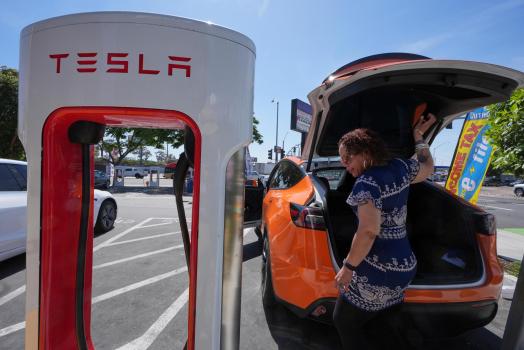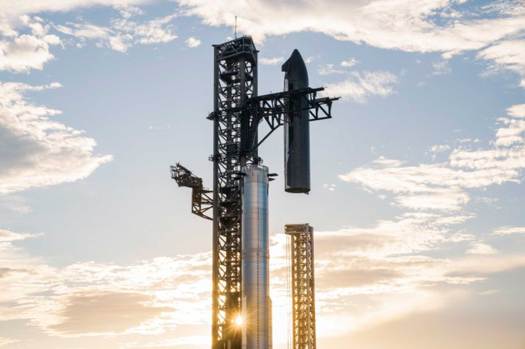Written by Calleih Wells
Federal tax advantages for electric vehicles are ending as a result of the big tax and budget cut plan that Congress passed Thursday.
Before they expire, buyers have until September 30 to be eligible for federal tax credits on EVs. However, even without such incentives, analysts say there are still compelling financial reasons to think about purchasing the cars.
Prior to the bill’s passage, a $7,500 federal tax credit was available for new electric vehicles, and up to $4,000 was available for used EVs. The initial goal of the incentives was to lower the cost of the cars. According to the most recent Kelley Blue Book data, the average cost of buying a new electric vehicle (EV) in the US is about $9,000 more than that of a new gas-powered vehicle. Compared to similar gas automobiles, used EVs often cost $2,000 more.
In many states, the credits were combined with other incentives to help close that price difference. Many Americans with lower and intermediate incomes will no longer be able to afford them without them, according to Ingrid Malmgren, Senior Policy Director of the nonprofit advocacy group Plug In America.
That’s very disheartening since, according to Malmgren, they’re a fantastic method to lessen the burden of transportation energy costs.
According to Malmgren, an electric vehicle is still a wise financial and environmental choice in every state for individuals who can afford the lifetime fuel and maintenance savings, even though the initial cost may be greater.
This is because, although they may not be less expensive to purchase, electric cars are less expensive to operate. According to Malmgren, an owner of an electric vehicle would still benefit even in the absence of the federal tax incentives.
Because it requires virtually no maintenance and costs significantly less to fuel than a gas-powered vehicle, you’ll quickly find yourself paying less, Malmgren said.
The point at which an EV driver’s fuel and maintenance savings surpass the greater initial cost varies, according to Malmgren. The type of vehicle and the frequency of use, as well as local gas and power prices, all play a role. According to her, EV drivers save money on maintenance because these vehicles usually need less frequent repair and have fewer moving components. Numerous internet calculators use some of those parameters to determine the precise moment.
According to a 2020 study published in the scholarly journal Joule, compared to filling up a car with gas, the average American EV fueled using a common combination of public and private chargers saves the driver $7,700 in fuel expenses over the course of its 15-year lifespan. States have different savings. According to the study, a person in Washington, where power is reasonably priced, might save more than $14,000 over the course of 15 years by charging their automobile at home during off-peak hours, which is considered the best-case scenario. According to the study, an EV motorist in any state who drives and charges normally would save money on petrol. The car’s purchase price, maintenance costs, and related tax credits were not taken into consideration in the study.
Generally speaking, producing an electric car produces more pollution than producing a conventional gas-powered one. However, according to experts, long-term EV driving still produces less pollution than gas-powered vehicles.
“The total pollution that has gone into making and driving each type of car has evened out once they both drive about 15,000 miles (24,000 km), which is slightly more than the average American drives in a year,” said Peter Slowik, U.S. Passenger Vehicles Lead for the International Council on Clean Transportation. The difference between the cleaner electric automobile and the more polluting gas car grows with each additional mile. According to the U.S. Department of Energy, the average EV’s emissions at the end of its life are about half that of an average gas car.
According to him, the EV is the greener option until you purchase a new vehicle every year.
Related Articles
-
People on the move
-
Apopka Police gun range a noisy neighbor but more people likely to move nearby
-
Denny s and Waffle House remove egg surcharges as prices fall
-
Average long-term US mortgage rate falls to 6.67%, the lowest level since early April
-
Prime Day game plan: How I m tackling the sale on a $100 budget
“They are obvious,” Slowik stated. Electric cars are already far more efficient by nature.
According to a Yale Climate Connections estimate from 2023, even in places where coal-fired power is used to charge electric vehicles, these vehicles emit less carbon dioxide. According to the data, an EV still emits 31% less pollution than a comparable gas-powered vehicle in West Virginia, one of the states that relies the most on coal.
According to Slowik, this is because electric vehicles are more adept at converting energy into motion. For instance, the Tesla Model Y and Model 3, the two most well-liked EVs in the US, can travel over 100 miles (161 km) on energy equal to one gallon of gasoline.
According to Slowik, that is already four to five times more efficient than a car that gets 25 mpg on gasoline.
Several private foundations provide funding for the Associated Press’s coverage of the environment and climate. All content is the exclusive responsibility of AP. Visit AP.org to find funded coverage areas, a list of supporters, and AP rules for dealing with philanthropies.












